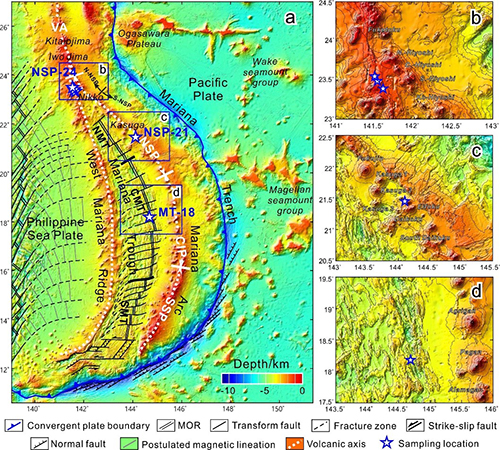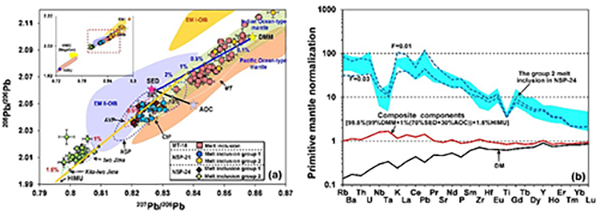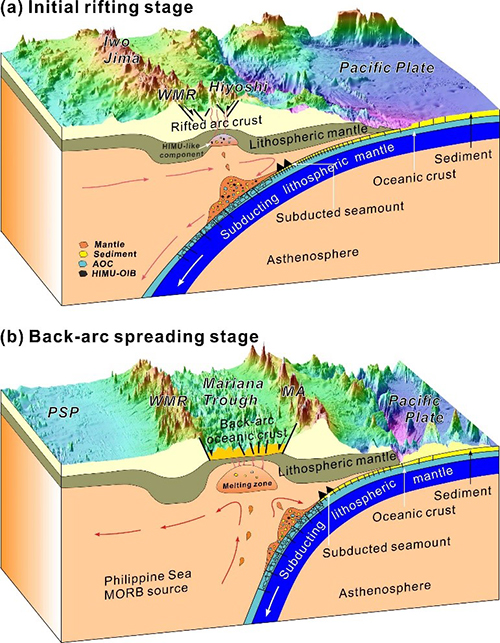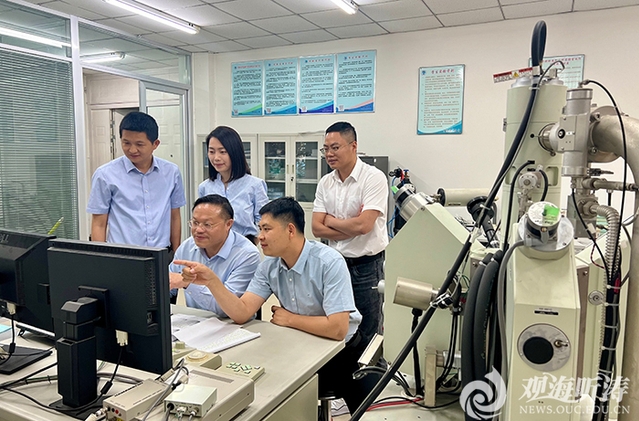The team led by Prof. Li Sanzhong of OUC’s Key Laboratory of Submarine Geosciences and Prospecting Techniques (MOE), in collaboration with scholars from home and abroad, made significant progress in the study of the composition of the mantle source region during the initial evolution of the subduction zone rift. The research outcome entitled “A HIMU-like component in Mariana Convergent A HIMU-like component in Mariana Convergent magma sources during initial arc rifting revealed by melt inclusions” was published in Nature Communications.

The subduction zone is an important area of material cycling on Earth. Volcanic rocks from mature island arcs and nascent back-arc basins are commonly used to study the contribution of subduction materials to the composition of mantle source regions, but the influence of mantle source regions in the initial stage of subduction zone island arc rifting affected by subducted material is not clear. The northernmost part of the Mariana Island Arc is currently in the evolutionary stage of island arc rift spreading to the back of the arc. It is an ideal area to study the composition of the mantle source region during the initial stage of island arc rift. In contrast, melt inclusions are captured during mineral growth and are less affected by external factors due to the protection of host minerals. Melt inclusions within early crystalline minerals (e.g., peridotite) usually retain relatively pristine information on magma compositions and mantle source regions, making them an important vehicle for the study of the composition of mantle source regions.


In this research, melt inclusions within peridotites from basaltic peridotites from the northernmost initial rift stage (24°N) of the Mariana Island Arc were analyzed for major trace elements and Pb isotopes, and compared with melt inclusions within basaltic peridotites from the Mariana Trough and Island Arc. The results of the research revealed that the melt inclusions within the Mariana Trough basalts have trace elements and Pb isotopic compositions similar to those of E-MORB. Compared with melt inclusions within trough and island arc basalts, the initial rift-age melt inclusions have higher K content and radioactive Pb isotopic compositions, which are close to HIMU mantle end-members, suggesting the presence of HIMU material in the initial rift-age mantle source region. HIMU (high-μ, high U/Pb ratio, 206Pb/204Pb > 20.5) mantle and deficit Mantle (DM), Enriched Mantle 1 (EM 1), and Enriched Mantle 2 (EM 2) are the four main types of the Earth’s deep mantle. HIMU mantle is usually associated with mantle column activity and deep material cycling. However, geophysical data show that there is no typical mantle column present in the study area, thus this component is most likely to be derived from the deep cycling of HIMU-type subducted material.

Many seamounts exist above the Pacific plate on the outer side of the Mariana Trench, and some of them have HIMU-type geochemical compositions. These HIMU-type seamounts subducted with Pacific Plate into the deep mantle and circulated and stored in the form of mélange with altered oceanic crust and subducted sediments within the overlying plate sheet. After that, with the opening of the rift valley, HIMU components were activated, and then entered into the rift valley mantle source region. Due to the subduction of many HIMU-type seamounts on the Pacific plate sheet, HIMU component may be present in most of the Mariana subduction zone, but significant HIMU component signals only appeared in the initial stage of rift evolution. This may be because of the low degree of melting of mantle portions during the rift period, preserving the HIMU component signals, which were either consumed in the back-arc region or masked by back-arc MORB-type mantle flows. The study of melt inclusions provides comprehensive information for our knowledge of material cycling in subduction zones and material composition of mantle source region.